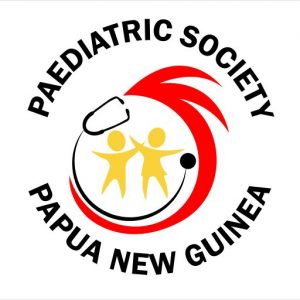Master of Medicine
Dr Rupert Marcus
Background: Birth defects contribute 7-10% to neonatal mortality, worldwide 2.3 million children survive each year with lifelong disabilities from birth defects and 90% of birth defects occur in developing nations. Data on birth defects from developing countries such as Papua New Guinea are scarce. We describe the profile of birth defects seen in a birth cohort in a provincial hospital in Papua New Guinea. Aim: To describe the specific types of birth defects in the cohort, to identify possible risk factors, and to direct prevention measures. Methods: Between February and August of 2018, one thousand consecutive babies born alive were assessed for birth defects at Milne Bay Provincial Hospital. Cases were identified and described by the use of the World Health Organization Classification of Disease (ICD-9). Controls were compared with cases utilizing pretested questionnaires. Results: In this study the incidence of birth defect was 28/1000 live births. Defects of the nervous system was most common with 17.9% of cases followed by cardiovascular, genitourinary, ENT and musculoskeletal defects which all comprised 14.3% each. Some characteristics were more represented in cases compared to controls, including maternal age <19 years (OR: 11.9), maternal smoking (OR: 3.8) and lack of folate supplements (OR: 3.5), however, in this relatively small sample of birth defects these were not statistically significant. Conclusion: Birth defects will increasingly play a major part in child mortality and morbidity in developing nations such as Papua New Guinea. Strategies in family planning, adolescent health, maternal health care and folate supplementation/fortification appear important in Papua New Guinea.
Dr Allanie Rero
Neglect is an important form of child maltreatment which can result in death or permanent poor health throughout life. For the purpose of this study, child neglect was defined when a child’s basic developmental and health needs have not been met by acts of omission by parents or guardians, leading to ill health and hospitalization. Between March 2017 and December 2017 there were 231 patients admitted to the Paediatric ward, 91 of whom fulfilled the definition of neglect. From those that had been neglected in some way 30 (33%) of children were adopted compared to 3 (3.3%) of controls, bottle fed 21 (23.1%) compared to (4.4%), unvaccinated 41 (45%) from 17 (18.7%) respectively. Among the children who had been neglected, severe acute malnutrition 42 (46.2%), followed by tuberculosis 26 (28.6%) and acute gastroenteritis 12 (13.2%), were the leading causes of hospital admissions, while malaria, pneumonia and anaemia were the leading causes in the controls. Mortality was high in the neglected group with a case facility rate of 23%, with severe acute malnutrition accounting for 9 of the 21 deaths (43%). Associated with child neglect were financial stress 25 (28%), parental issues 23 (25%), uneducated parents 15 (17%), closely spaced pregnancies 13 (14.3%), domestic violence 4 (4.4%) and a child with disability 3 (3.3%).
Diploma of Child Health
Dr Dasha Pomat
In PNG pneumonia remains the most common cause of admission in children with CFR of 9.62% in 2018 for severe pneumonia. This systemic audit was aimed at identifying where care is adequate and where it is lacking and needs improvement in the current management practices of severe pneumonia in Nonga General Hospital, East New Britain Province. The objective of the study was to audit the clinical standard of practice of the management of severe pneumonia in children aged 1 month to 59 months, using a proforma checklist of clinical standards outlined by the Paediatric Society of PNG and the WHO.
Dr Clyde Kamo
Auditing is a vital tool to improve quality of any endeavour. Good auditing with regard to death auditing and reviews depends on the availability of updated credible records, a standard widely accepted auditing protocol and the objective to make adjustments and needed changes to ultimately improve patient care. Over 5 months, the paediatric team in Western Highland Provincial Health Authority has been carrying out monthly death reviews based on the WHO death reporting forms with the aim of identifying common avoidable modifiable causes of deaths. Strategies can then be put in place to improve these factors. This paper looks at the effects of establishing a regular death auditing program and the implications it has for the future care of paediatric patients.
Dr Maxon Lifigao
This presentation discusses the incidence and clinical features of congenital syphilis, and the incidence of mothers who are VDRL positive delivering at the National Referral Hospital in Honiara, Solomon Islands. In Honiara in 2018-19 of 1535 live births: 130 (8.5%) mothers were VDRL positive; 72 babies (4.7%) babies were VDRL positive; 67 (4.3%) babies were TPHA positive; 7 (0.5%) babies had clinical features of congenital syphilis. The rates doesn’t take into account still births, which are likely to have higher VDRL positive rate.
Dr Wilma Luan-Kasso
Kangaroo Mother Care (KMC) was introduced to Modilon General Hospital in 2015 but there were many implementation challenges due to limited resources and a limited level of a supportive and enabling environment. Aim: To assess the impact of intermittent KMC on preterm/low birth weight neonates on discharge outcomes. Methods: This prospective observational study included educational sessions for special-care-nursery staff and mothers about KMC. This was followed by an assessment provided on the care of 38 neonates with birth weights between 1200-2000 grams who received intermittent KMC. Results: Overall, 84% were preterm with 83.3% of the newborns delivered at health facilities with hypothermia on admission. KMC hours ranged from 0-8 hours per day. More than half absconded/leaving hospital against medical advice and 72.7% and 41.7% had weight gains of <5 grams/kg/day and 10 grams/kg/day, respectively. Conclusion: Early essential newborn care practices for preterm/low birth weight newborn and an enabling supportive environment and resources for both the health care worker and mother/career would improve the implementation of intermittent KMC.

